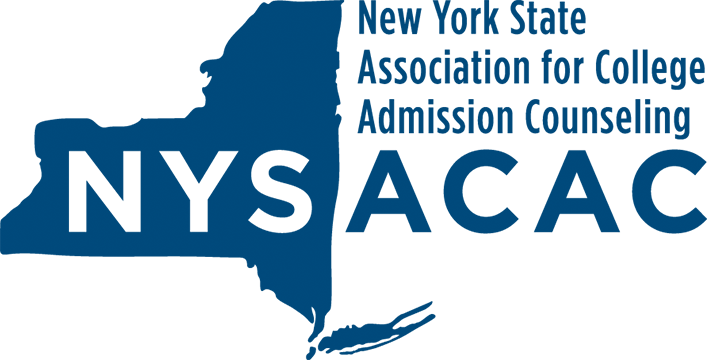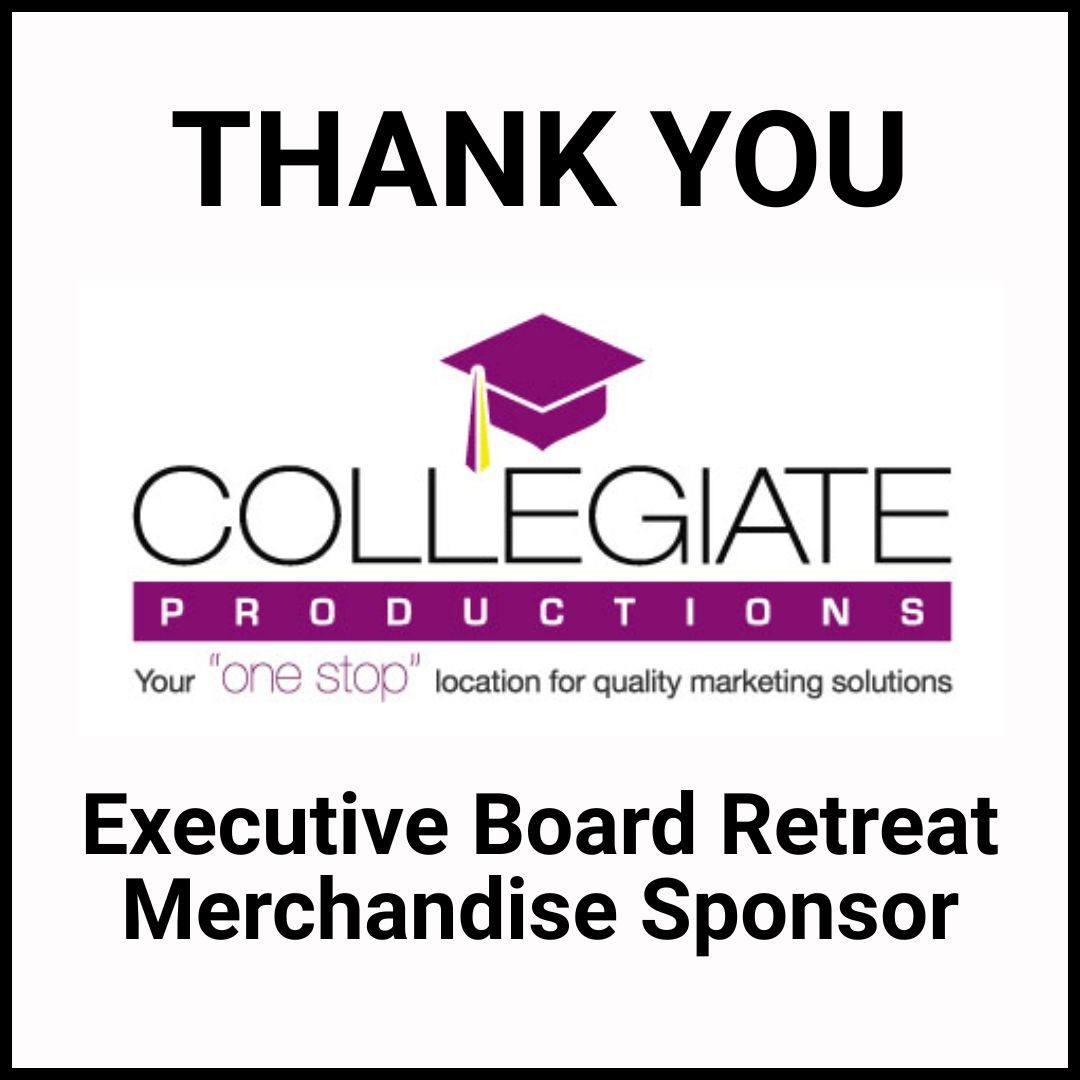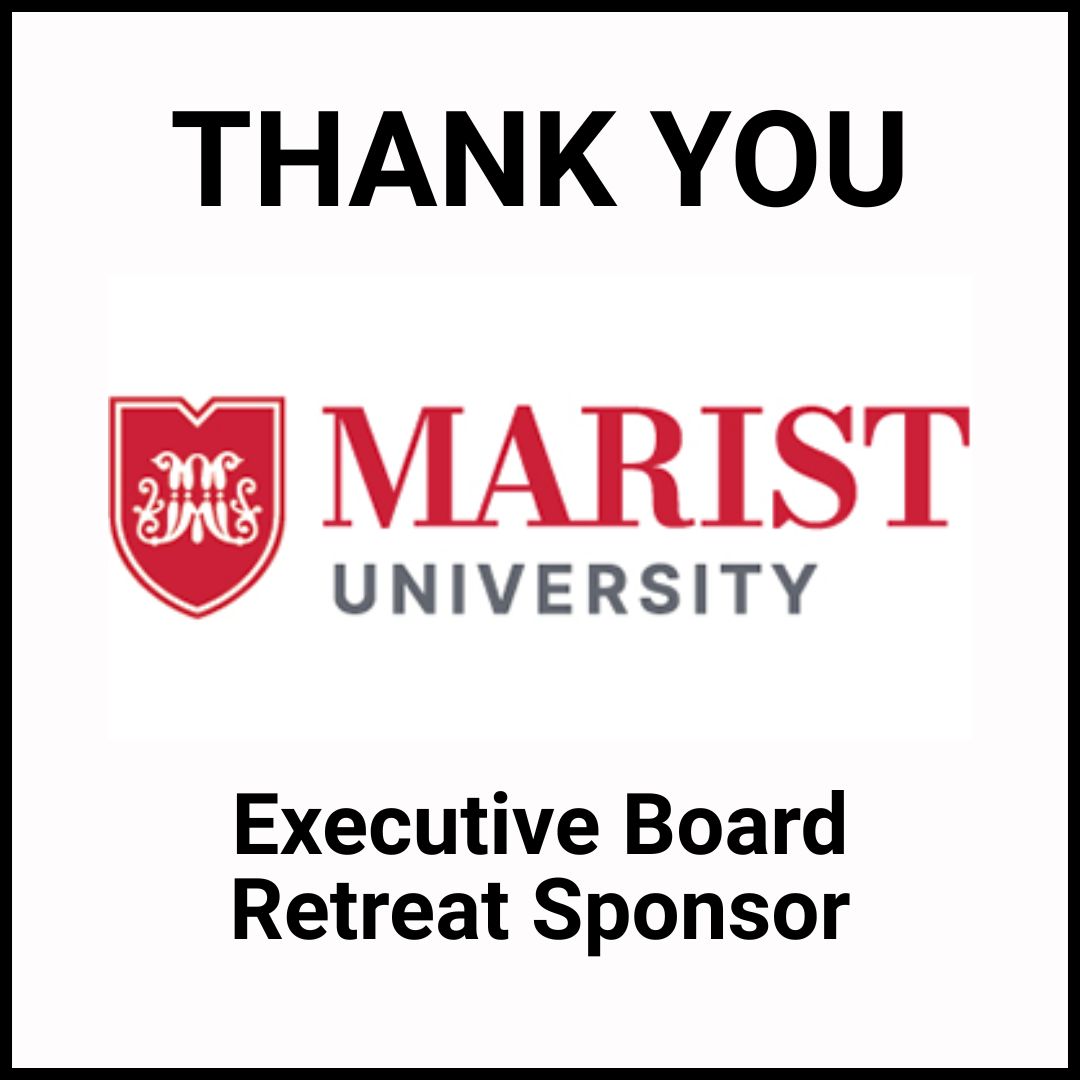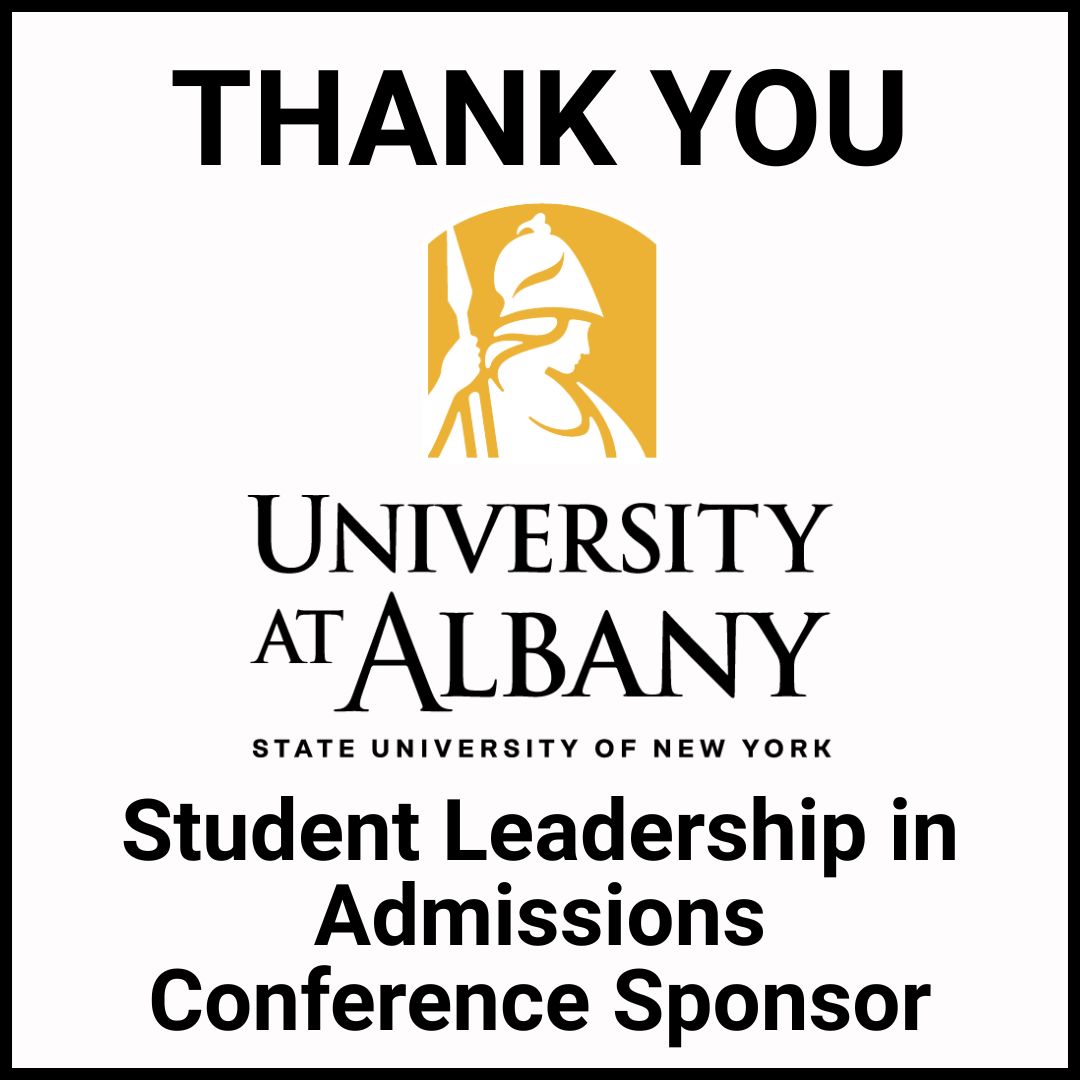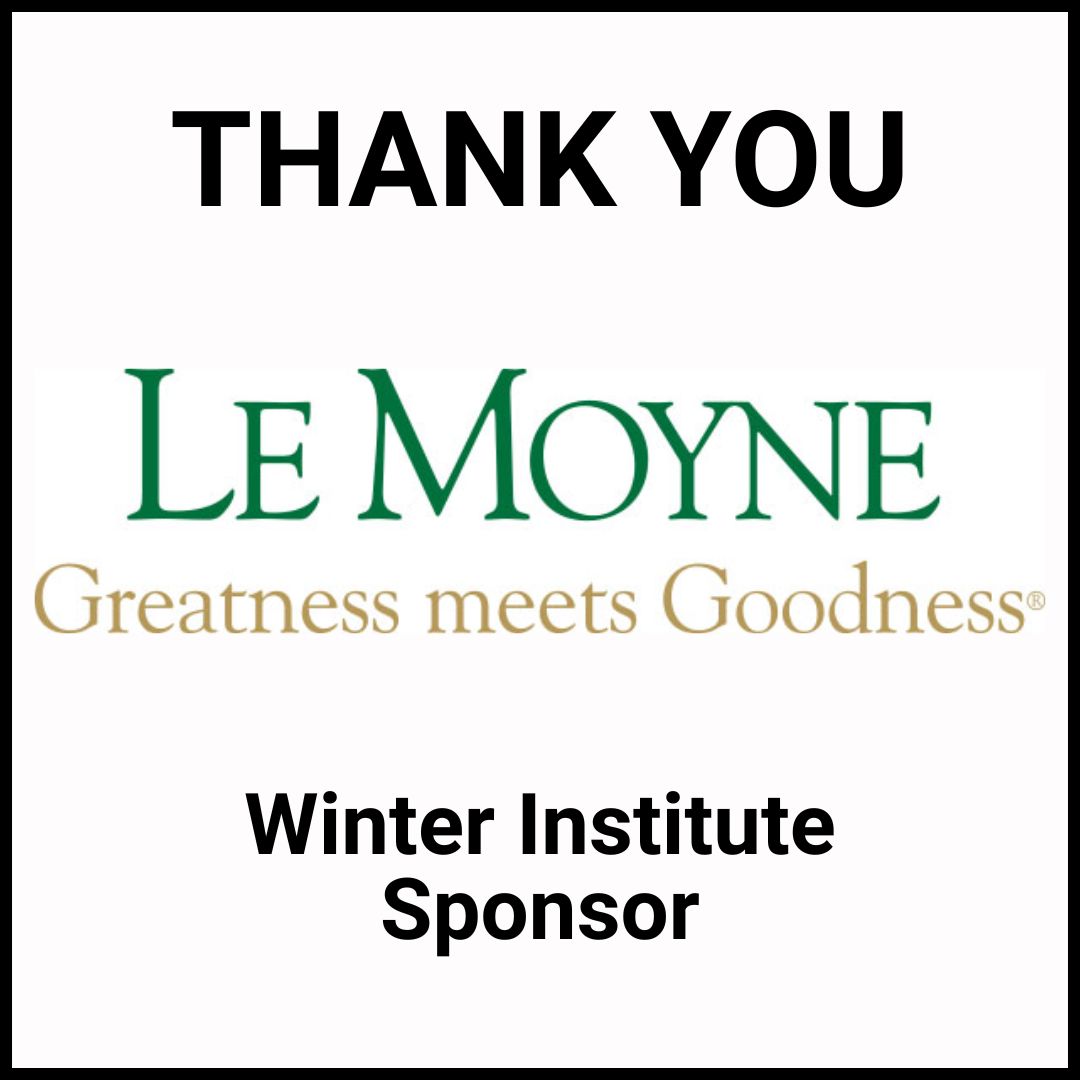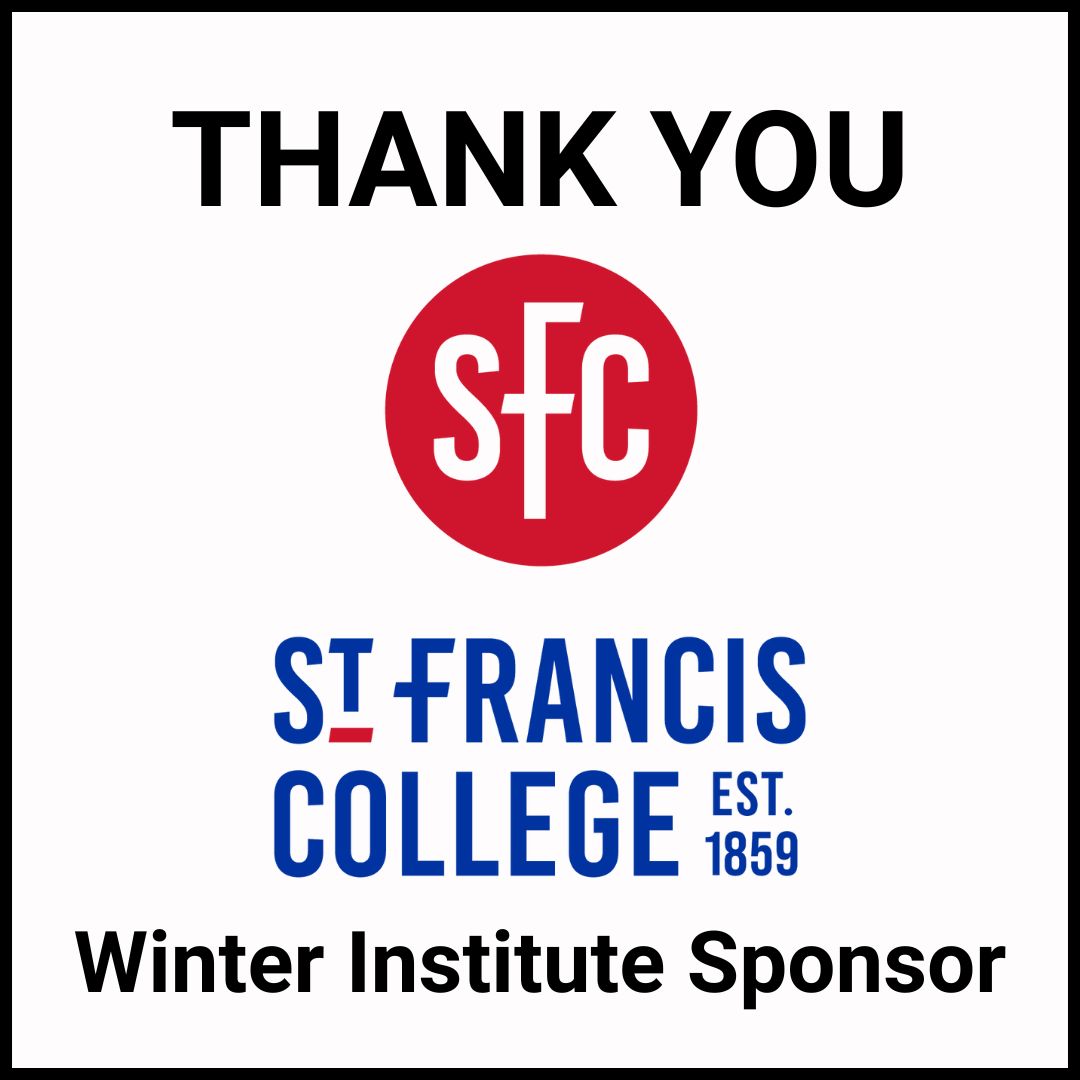- Home
- About
- News
- Government Relations
- Professional Development
- Community Outreach
- Donate
- Membership
|
Message from the President Colleagues and Friends,
Robert (Rob) Piurowski
President, NYSACAC
Super Conference Update Some conference highlights:
Thanks to everyone at Marist, our conference Steering Committee and my fellow co-chairs, Mike and Tina, for all the work to make this conference as meaningful as possible. Have fun this week! ************************************************************************************************************* NYSACAC 2018 Fall Regional College Fairs St. Joseph’s College, Brooklyn Monday, October 22nd, 2018 Albany College of Pharmacy and Health Sciences Tuesday, October 30th, 2018 Please view www.nysacac.org/nysacac-regional-college-fairs for event times and information on registration for the fall events! ************************************************************************************************************* By Patricia Maben & Jacqueline Gregory, Enrollment Management & Marketing Strategists & Consultants NACAC’s Career Path for Admissions Officers report highlights that while women are overrepresented in entry and mid-level admissions positions, it is the opposite in senior-level roles. It’s time to change that! As women who’ve blazed our own paths in a field we love, we’re sharing our top three pieces of advice for fellow women—though it also applies to men! If you’re passionate about enrollment and are looking to advance toward a leadership role, read on.
************************************************************************************************************ By Seedling Committee Co-Chair Allison Newman, Scholarship Director at Say Yes Buffalo
“Was a wonderful trip for the boys; our tour guide was great. Definitely sold some kids on College. For some reason they were much more impressed than the trips we do... from Sch 76 every year. Several of the boys told me they want to go there as we walked to the bus. Another young man stated he didn't want to go back to Buffalo; he wanted to stay.” Attached are some comments from some of the young men who went on the Seedling trip. Please note that many of them are ESL students in 7th grade from our Bilingual Academy. How amazing are these notes???
************************************************************************************************************* NYSACAC Featured on BronxNet News ‘OPEN’ By Susan E. Davidson, EdM, Immediate Past President of NYSACAC After learning about the NYSACAC Professional Development Forums, Helen Greenberg, producer of 'OPEN' on BronxNet News, contacted Courtney Cyr and Sheryl Kavanagh, Professional Development Co-chairs, about a NYSACAC appearance on her show. Although we could not make the original invitation date of March 19, we were invited to appear on the March 21 episode with producer Yeila Lluberes. Unfortunately, on March 21 a snowstorm hit the area, so our date was postponed to March 28. OPEN is a live, one-hour TV program which films at Lehman College in the Bronx. NYSACAC has many long-standing members from Lehman College, so this seemed like a win-win opportunity for the organization. What I really enjoyed about this experience is that the show is almost exclusively run by college students interested in TV, communications, or media. Students are behind the camera, they run the sound checks, they make sure all the guests are set up with individual microphones. They are professional, courteous and work effectively as a team. As college counselors, we often talk to our students about the opportunities they might get by going to a college like Lehman. This was a clear representation of one of those advantages. There is something about being on live TV that makes everything a little more exciting. There are no second takes or refining or tweaking what you said. It's akin to presenting to a room of people, one of my favorite things to do. In that sense, it was both a challenge for me and one of my favorite experiences. Two great takeaways: first, they invited me back on the show come September. Second, one of the other presenters/guests was a young woman from the Bronx who is a blogger. It just so happened that by day she is also a TRIO counselor at Bronx Community College. We chatted in the wings about college access and I learned of the college trips that she is planning for her students. Future Camp College participants? Perhaps! For her dedication to the field, I have to give a big thank you to Deyla Sabio (@BLOGGERFROMTHEBRONX). See: https://youtube.com/watch?v=6KuBQ3ZLcNQ ************************************************************************************************************ Give Transfer School Students a Fair Chance By R. Ummi Modeste-Rogerson, MSEd, College and Career Advisor at City-As-School HS and 2017-18 NYSACAC High School Delegate Imagine you are an admissions officer sitting at your desk at “Iroquois College”, a private liberal arts college in Western New York. You’re reviewing the transcript of Alana Smith, a graduating student from a transfer high school in Brooklyn. You quickly scan down to the bottom of the transcript and see that Alana’s GPA is 73.8. Since the mean GPA of the current freshman class at Iroquois College is 88.5, and you have 15,780 applications for 1,425 spots, do you automatically drop Alana into the “DENIED” pile without a second thought? Or do you look closely at Alana’s transcript and recognize that she is graduating from a different high school than the one at which she started? Do you read the school profile to better understand the school from which Alana is graduating? Do you notice that her high school uses a non-traditional grading system and that Alana earned the highest possible grade in every course she took at her current school and that 73.8 GPA is a holdover from her previous school? These are questions I encourage admissions personnel to ask themselves when reviewing applications from transfer school students. Their applications cannot always be viewed through the same lens as those used for students from traditional high schools. The personal essay, letters of recommendation, school profile and other optional supporting documents are even more important for transfer school students than they are for other students; transfer school students often have faced and overcome tremendous odds just to stay in school. You cannot determine that from looking at a transcript and SAT/ACT scores alone. How to give students from transfer schools a fair chance
Some schools do not use standardized tests, but use portfolio based assessment tools (PBATs) instead. PBATs are a compilation of work that students develop over time to demonstrate mastery in their subject areas, rather than high-stakes tests. Students must fine-tune their skills in reading, writing, math, conducting and presenting scientific and social studies research, and public speaking in order for their PBATs to be accepted. The entire process helps prepare students for the rigor of college work. If the students submit all or part of their PBATs with their college applications, please read the rubrics that are attached so that you know how the PBATs were scored and what the scores mean. Transfer students often do not fit the traditional box of what admissions officers consider a “good candidate” for admission. In order to fairly assess these students, in order to provide equity and access for transfer school students, admission officers will have to think outside of the box. ************************************************************************************************************* Helping Students Envision What Going to College Means For Them By Genevieve Griffin, Founder and President of Small Steps Go Places Inc. Small Steps Go Places Inc, which I founded in 2015, has grown up over the past few NYSACAC conferences. Initially, I shared OPTION PLAY edition 1 at Wagner College. Last year, I shared how to present a transition workshop for high school seniors with the awesome Dr. Carla Schere at SUNY Geneseo. I met dedicated counselors from a number of schools and CBOs. The messages that motivated me this past year include:
I am currently completing a set of scenario cards sensitive to the concerns of first generation students. I spoke with counselors across the country already using OPTION PLAY, advocates for students from CBOs like United Way, administrators from first generation college programs such as UMichigan and SUNY, and parents of current freshman. I also revisited my own experience as a rural first generation student. During this research period it became very clear that college freshman have a better chance of succeeding if they can envision what going to college means for them. Teachers, counselors, and parents helped students graduate. Now, when they go to college, they will be more likely to deal with the expected situations and problems that are the part of any college transition if they know where to look for support. They will be more likely to succeed when they believe using support is a sign of successfully thriving in college, not lacking what it takes to succeed. Some schools have transition programs that help seniors prepare for orientation, think about handling the independence of living at college, and celebrate their high school years. Other schools don’t have the time or resources to do more than congratulate seniors as they leave. A few schools offer seniors continuing support through one or more years in college. All of these transitions will be made better by offering a way for students to envision or define what the transition from high school to college means to them. This can range from asking the question in a counseling class and requiring a written page, to offering a transition program focusing on preparing for expectations, to using OPTION PLAY. There is a picture in my sights, which becomes clearer as I move forward, of students sitting around a table playing OPTION PLAY. Among the group are students from both privileged and underprivileged backgrounds with diversity represented by more than just skin color. They are all trying to decide the right answer to Scenario #1. Please visit smallstepsgoplaces.com to find ways to help students define their transition from high school to college. ************************************************************************************************************* ************************************************************************************************************* Movers and Shakers… Member Updates
Meghan DeMayo-Dalen is now at Suffolk County Community College working as a counselor. Her new title is Counselor/Instructor. Bryan Rothstein is now at Iona College as the Director of Undergraduate Admissions.
David Loreto joined the SUNY Buffalo State College staff as director. For a full bio, visit http://dailybulletin.buffalostate.edu/interim-cio-and-vice-president-enrollment-marketing-and-communications/appointment-director
Bernadette Condesso, Director of College Counseling at Solomon Schechter Westchester, is moving to Graded - The American School of Sao Paulo (Brazil) as Co-Director of College Counseling.
Laura Miller, current Director of College Counseling at The Frisch School, will be joining Solomon Schechter Westchester in July as the Director of College Counseling.
Amber N. Long moved from Director of College Counseling, THINK Global School to Director of College Guidance, Yeshivah of Flatbush Joel Braverman High School. ***************************************************** Lindsay Gerhardt became the new Assistant Dean of Admissions and Recruitment at the Batavia Campus Center. She comes to Genesee Community College after eleven years of service at SUNY Geneseo in progressively more demanding admissions roles, culminating as the Associate Director. She served on numerous committees at Geneseo, among them: President’s Commission on Diversity and Community; Enrollment Marketing Strategy Team, Equity Scorecard; and the Scholarship Committee. She also worked at Alfred University as an admissions counselor.
***************************************************** Beryl S. Jeffers was selected by the National Association of Black Women in Higher Education (ABWHE) for the 2017 Outstanding Leadership in Higher Education award. She received this prestigious honor at the 2017 ABWHE National Conference at Temple University, in Philadelphia, PA.
Beryl was selected because of her dedication to ABWHE's mission, and work toward supporting African American women in the Academy as they strive to fulfill their educational and professional aspirations. She contributed to many in the spirit of “lift as we climb,” and works diligently to support women in the Academy by encouraging underrepresented populations to pursue their education. With a passion and commitment for students as well as student development, Beryl maintains a variety of active roles within The State University of New York-System Administration. As an integral member of the management team, Beryl is involved with the discussion, development, and implementation of NYC recruitment as well as marketing division-wide initiatives.
************************************************************************************************************* Unlocking the Power of Career Exploration In Student-Driven Programming Design By Jessica Brady, Career Fluency Programs Manager, The Opportunity Network As admissions and counseling practitioners, there are many demands on our time with students. When the focus is on getting into college, how can there be any time left for preparing for careers, as well? But ultimately, college and career do not operate as separate entities. For college entry to lead to college matriculation, career exploration must play a role. Field-wide research indicates that students are significantly more likely to succeed in school if they understand the connection between their academic efforts and their long-term pay-off in real-world success. When engaging students on their college and career goals, our practice should always be rooted in elevating student choice so they can discover and create their own stories of success. To facilitate this, we must provide students with opportunities to explore their college and career options. By doing so, students can equip themselves with the information and skills needed to make their “best fit” choice. How can we integrate career programming into existing supports and interventions to ensure students are in the position for long-term success through college and beyond? As a place to start: at The Opportunity Network, we have created Career Fluency®, a robust curriculum that showcases the synergies between college and career success. Career Fluency® can provide counseling and admission practitioners with the necessary considerations and programmatic features for students to chart their own path toward college and career success, like:
The Partnerships Team at The Opportunity Network is ready to help our peer community rethink what college and career programming centered on student choice can look like. We are ready to work with partners to specify their college and career goals for students, develop a scope and sequence of curriculum and supports to make progress towards those goals, and train partner staff on Career Fluency® lessons to make the content relevant and engaging for their unique students. Together with our partners, we can commit to ensuring that all students have the knowledge, skills, and networks to be in the driver’s seat of their own educational and career success. ************************************************************************************************************* ************************************************************************************************************* Inclusion, Access, and Success By Christine Loo, The Stony Brook School I am thrilled to be serving a three-year term on NACAC’s Committee on Inclusion, Access, and Success. When I first saw the email to apply for a NACAC committee, I was hesitant. After all, there were probably a lot of counselors who had more experience than I did. Did I really have something to contribute to the discussion on inclusion, access and success? I realized that I actually did. My experience with all three of these issues began more than 45 years ago (wow, that was a LONG time ago!). I stepped off the airplane from South Korea and stepped into a world I did not recognize. December in Buffalo, New York was a shock compared to where I had come from. My parents literally came to this country with a few suitcases, the promise of a residency program, and their dream of educating their children. Fast forward about 10 years while my brother was applying to colleges, My parents did not know anything about the college process here in the US. To this day, I am not completely sure how we filled out the applications, including the financial aid forms. I attended a rather large high school and I do not recall meeting with my counselor more than a few perfunctory times, but somehow we got it done. The goal, of course, was to be admitted to one of the Ivy League schools. Somehow, it seemed like that was ALWAYS the goal, throughout middle and high school. Our acceptance to Penn and Brown made us feel like we had achieved the American dream, but being accepted to an Ivy League school and feeling like you really belonged there were two very different things. It took time for Penn to feel like it was a place I could call home. Fast forward 30 years, I now work as a college counselor. Seven years into this amazing work, I have had the chance to work with students across the spectrum. My work with several CBO’s has given me the opportunity to be amazed at the tenacity and resilience of students who attend school full-time, hold a job and often care for younger siblings. Working at The Stony Brook School has given me insight into what it is like being an international student navigating the assimilation of a new culture, but still struggling with the expectations of family in the midst of discovering who you really are. Finally, being a parent has made me only too aware that while I really do believe in fit, there are still remnants of my tiger mom self that really wants my children to succeed and by succeed I mean get into a “top” school. What have I learned from all of these experiences? I would say the following things are what have been most salient to me:
I want to end this article with two conversations I had with two very different students this weekend. The first was with a student who came to us from an access program. Emil was telling me how his four years at The Stony Brook School changed his life. He gained confidence, grew as a leader, and invested in the lives of others. He was now ready to do the same in college. The other student was sharing with me that in his four years, he discovered himself. Louis, unlike many of the other international students, wanted to study philosophy, politics and economics. His parents were slowly coming to terms with his life goals. It had been the support of his teachers that helped him be honest about what he really loves and move forward in the pursuit of it. As I think about the important work of this committee, it is students like Emil and Louis that make me want to ensure that every student has access to opportunity, feels included both in the process of getting to college and during their time in college, and knows what it is to succeed for himself or herself. ************************************************************************************************************* Freshman Year: The Foundation for Academic Success By Brittany Aiello, State University of New York at Cobleskill “Tell me about yourself. Tell me about a challenge you have had to overcome.” These are two sample questions we ask students in order to initiate rapport during interviews. Surprisingly, a common challenge/theme emerged from the students’ stories during these interviews. Students repeatedly stated their desire to re-do freshman year. “Freshman year was my worst year.” As I listened to these stories, it was reminiscent of research I did for my graduate thesis. These student testimonies were supporting the research I found: ninth grade is the make or break year in high school. A study by Cohen and Smerdon (2009) found that ninth graders fail at the highest rate when compared to other grades. The study also found that freshmen have the lowest GPA, most missed classes, majority of failing classes, and more missed behavioral referrals than any other high school grade. Another study by McCallumore and Sparapani (2010) found that only 70% of public high school freshmen nationwide graduate within four years. This means about 25% of ninth grade students repeat the ninth grade, and about 40% in an urban setting. Of these repeaters, only 10-15% graduate high school four to six years later. Mentally and emotionally, this puts the student at a disadvantage from the start. The student has to play catch up for the remainder of high school. This alone can make the college process overwhelming, daunting, and sometimes out of reach However, if students are able to complete their first year on time, they will most likely graduate high school within four years. (McCallumore & Sarapani (2010). For instance, Nield (2009) looked at the urban environments of New York, Chicago and Philadelphia. Students that stayed on track during ninth grade had an 81% chance of graduating on time. Students who did not matriculate had only a 20% chance of graduating within six years. So what can be done to better support ninth grade high school students? Research supports the adherence of a transitional program to help combat the challenges of freshman year. The transition from middle school to high school puts ninth grade students at risk for dropping out (Featherston lll, (2010). Transitional issues include, but are not limited to the following: academic rigor, peer influence, academic/school setting, physical and emotional changes, and greater responsibility at home. McCallumore and Sparapani (2009) found that schools that have a transitional program in place for freshmen have an average dropout rate of 8% versus 24% of schools who do not. These transitional challenges and statistics support the need for a strong freshman foundation. One proposition is that the role of ninth grade counselor be defined as a transitional role. A transitional program would include primary, secondary, and tertiary supports extended to the students by the counselor. Examples of these support mechanisms include classroom curriculum, small group work, and individualized meetings to name a few. More and more high schools have defined the role of a college counselor to support juniors and seniors. This shift has proved beneficial in the college admissions process. Why not also do the same for freshmen? If we recognize the vulnerability of the first year and act upon it, we could possibly increase urban graduation rates past 60%. Jim George quoted: “It’s not where you start that is important, but how you finish.” This holds true in many ways, but I believe that a stronger start could create an even stronger finish.
************************************************************************************************************* NYSACAC Spring Professional Development Regional Forums a Success
Panelists: John Sarafine (Fairport High School) Kimberly Harvey (SUNY Geneseo) Jessica Schaffner (Syracuse University) Shalena Clary (University of Rochester) Moderator: Karen Archibee (SUNY Oswego) D’Youville College
Siena College
************************************************************************************************************* By Brian Gleitsmann, Assistant Director of Admissions, Utica College It was only a few minutes after getting unpacked that I made my first connection at Summer Institute. A gregarious young admissions counselor named Jowel from Marist College showed up at my door to ask if I knew how to access the internet in the residence hall where we were staying. We didn’t have any luck getting his computer online, but we did have a great conversation. It was just one of many introductions I made that day. NYSACAC’s Summer Institute is hosted annually at Skidmore College in Saratoga Springs. Think of it as “boot camp” for admissions counseling. After lunch on the first day; everyone headed to a gymnasium where there were chairs as well as a couple microphones set up. I took my seat and made several more introductions, and contemplated what kind of public humiliation we would have to endure once the icebreaker activities started. Contrary to what I thought, they turned out to be quite fun. You know that everyone there (mentors aside) is new to admissions, but it’s still surprising when you hear people say they’ve only been on the job for two days! The icebreakers continued with a secret handshake exercise, and culminated a chaotic, but fun rock, paper, scissors tournament. The core of the Summer Institute revolves around small mentor groups, each lead by a Summer Institute mentor. My group was led by the incomparable Dan Sarmiento, and composed of a mix of high school and college admissions counselors. Each group is given a set of applications, and asked who to admit, who to deny, and who to waitlist based on a profile of an imaginary school. The conversation was quite interesting at times. Dan let us do most of the discussion ourselves, but would throw in a curveball such as an applicant’s family deciding to donate money to the college, or pressure from a coach to admit a student with certain athletic abilities. When we weren’t meeting with our mentor groups, we were going to different sessions that covered everything from basic admissions terminology to career trajectory, and the financial aid process. Before becoming an admissions counselor I worked in application processing for about five years, so I knew the basics of the admissions cycle. However, I still took a lot of useful information from the sessions. One of my favorite sessions was called “Life on the Road,” which was filled with lots of good advice like always calling ahead when you’re running late for a visit. There were some funny stories as well . One of the presenters told us about how his pants caught fire (not kidding) while on a trip! Another one of the presentations was about stereotyping and implicit bias in college admissions. This one made me think, and exposed me to some ideas that I never thought much about before. With so many different types of people in the world, and so many institutions working to build diverse and inclusive communities, the importance of having a basic understanding of the issues certain people face cannot be understated. Part of what makes Summer Institute great, aside from all the sessions and mentor group meetings is that there are also fun networking opportunities. For dinner one night we were allowed to go into Saratoga to eat. My friend Mark and I decided to eat at a place called Hattie’s where I ate the best fried chicken I’ve ever tried. We walked around for a bit and finally stopped into a local bar called Druther’s only to discover it closed at 11:30. Luckily we were able to jump in an Uber back to campus with a couple other people from Summer Institute. The next morning, some of the mentors took a group to the racetrack in Saratoga. We had to wake up early, but if given the opportunity, I would do it again. We didn’t get to see any horse races, but we did get to see the horses up close as the trainers warmed them up. The thing that I remember the most is the sound of the horses snorting as they ran before we were even close enough to see them. The last night of Summer Institute wraps up with a karaoke BBQ. For me public speaking is not a problem, but one of my life goals has always been to never sing in public. I needed a little coaxing to get up and sing, but I did it. You won’t find me at any local karaoke nights, I was glad I took that step outside my comfort zone. At the end of the day I think while Summer Institute is about professional development, it’s also about trying new things and looking at things from different perspectives. On the last day the mentors revealed which students each group decided to admit to their imaginary colleges, and the mentor groups met one last time. I do remember a conversation I had with my mentor Dan. He told me that he switched from college admissions counseling to high school guidance counseling because as his career advanced he was no longer working with students on a regular basis which is really what he enjoyed. I’m not sure how far I will go in this profession yet, and so I try to ask different people how they ended up where they are. Probably the most valuable thing about Summer Institute is that it gives you a network of mentors and colleagues who you can reach out and vice versa. Plus, it’s always nice to see a familiar face on the road. Summer Institute was a great experience, and I feel fortunate to be in a profession where there are so many people are willing to teach and guide the next wave of counselors. ************************************************************************************************************* SUMMER EVENTS CALENDAR JUNE June 5-6, 2018: Coming Together, Pre-Conference Sessions and College Tours @ Marist College June 6-8, 2018: NEACAC & NYSACAC Super Conference@ Marist College July 6-8, 2018: Camp College@ SUNY Oswego June 11, 2018: #NACACreads: Why Are All the Black Kids Sitting Together in the Cafeteria? @ Twitter Chat JULY July 29-August 1, 2018: Guiding the Way to Inclusion@ Washington, DC AUGUST August 3-5, 2018: Camp College@ SUNY Geneseo August 7-10, 2018: Summer Institute@ Skidmore College SEPTEMBER September 12, 2018: FAFSA Updates@ NACAC Webinar September 23, 2018: Long Island National College Fair@ NYCB Live, Home of the Nassau Veterans Memorial Coliseum September 27-29, 2018: NACAC National Conference@ Salt Lake City, UT OCTOBER October 14, 2018: New York City STEM College and Career Fair@ Jacob K. Javits Convention Center October 22, 2018: NYSACAC 2018 Fall Regional College Fair@ St. Joseph’s College, Brooklyn October 30, 2018: NYSACAC 2018 Fall Regional College Fair@ Albany College of Pharmacy and Health Sciences NOVEMBER November 5, 2018: New York City Performing and Visual Arts College Fair@ Jacob K. Javits Convention Center ************************************************************************************************************* An ‘Easy Decision’ to Welcome Students By Joe Latimer, Assistant Dean for Enrollment Diversity and Outreach at University of Rochester
The University of Rochester’s Office of Admissions welcomed seven Puerto Rican students displaced by Hurricane Mariato campus for the spring 2018 semester. For the full story please see The University of Rochester’s Newscenter here. (From left to right: Andrea Rosado, Joshua Rosario, Joe Latimer of the Admissions Office, Brian Basu, Adriana Santiago, Claudine Daneri, Syanis Vargas (seated) and Mariana Ortiz.)
************************************************************************************************************* |
